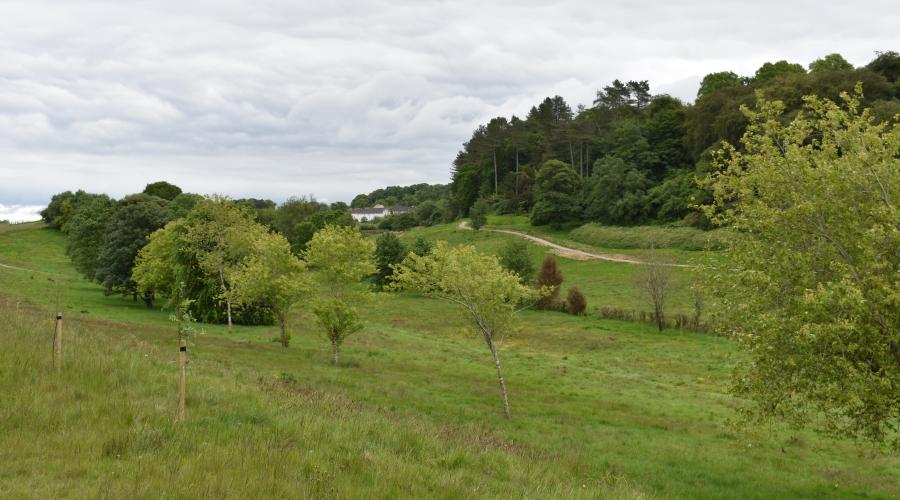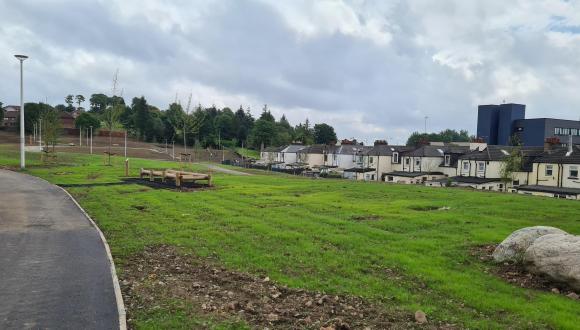
Nature and health — a perfect partnership
As we head into Mental Health Awareness Week how appropriate that this year’s theme is “Nature”, and that it is also Scotland’s Green Health Week. This may indeed be a perfect partnership.
It is almost a cliché to say that better access to the outdoors, and time spent connecting with nature, can help tackle physical and mental health issues. But cliché or not, it’s true. Research from the Mental Health Foundation showed that last summer half of people in the UK said that being in nature was a favoured way to cope with the stress of the pandemic. Set alongside the knowledge that poorly designed urban environments increase the risk of health issues, it’s a compelling argument to advocate more good green infrastructure.
As we head into Mental Health Awareness Week how appropriate that this year’s theme is “Nature”, and that it is also Scotland’s Green Health Week. This may indeed be a perfect partnership.
The European Green Infrastructure Strategy makes a strong case for saying that the essence of good green infrastructure is that it is multi-functional. Several of their reports emphasise quality of life and public health benefits, and, increasingly, scientific research highlights the clear physical and emotional health benefits where enhanced green infrastructure encourages spending more time outdoors and exposure to nature. Reduced blood pressure, lowered body mass index, tackling depression, improved social cohesion … these are just some of the positives revealed.
There are a host of statistics demonstrating that outdoor exercise reduces the risk of illness. A recent report from Dundee noted that 9 out of 10 people visiting the outdoors reported an improvement in their mental health. Fortunately, Scottish cities have long been associated with green spaces. Glasgow has tenaciously and proudly clung to the title of ‘The Dear Green Place’, whilst it is reckoned that at least 28% of Dundee can be categorised as greenspace. A recent BBC report, based on figures from ESRI, showed that nearly 50% of Edinburgh is greenspace.
However, dig deeper and it is clear that having local access to good quality greenspace is not quite so clear cut. For the links between environment and health to coincide then a sense of what makes a healthy place is crucial. Not everyone has access to inviting outdoor spaces ‘on their doorstep’. For many, grey rather than greenspace dominates their locality. That’s where initiatives like the ERDF Green Infrastructure Fund play a positive pivotal role.
The Green Infrastructure Fund supports projects that, amongst a range of beneficial outcomes, consistently deliver environmental improvements and quality of life benefits. The fund targets Scotland’s urban areas where there is a deficit in good quality greenspace and a clear issue of local deprivation. The current recognition of the value of greenspace in urban settings, and the indelible association with improved mental health and therefore preventative health intervention, is ever clearer, and increasingly valuable.
Given that we are in Mental Health Awareness Week a summary of some of the contributions from Scotland’s Green Infrastructure funded sites illustrates the impact such projects can have.
At Fernbrae Meadows, on the southern fringes of Glasgow, a series of Tuesday Health Walks are an obvious example of how high quality greenspaces leads to higher rates of physical activity and better social interaction. And other healthy uses of the site are easy to find. The sensitive creation of wider path networks during the pandemic enabled larger numbers of local people to use the site, organised ‘buggy walks’ were significantly over-subscribed, and local schools frequently use it for outdoor learning.
All are clear signs that this project contributes strongly to the well-being of the local community and provides excellent opportunities to connect with nature. In this high quality greenspace there is abundant evidence of higher levels of physical activity and ample opportunities to relax and reduce stress levels – a real bonus for alleviating mental health issues.
As one teacher at nearby Cathkin Primary School noted “The children in my class love going to Fernbrae Meadows. The wildlife, the flowers, the trees, they just love to see it all, and they are maybe not used to doing that on their doorstep. The park helps reduce anxiety levels.” Another teacher proudly recalled that one wee boy returned from a day at Fernbrae Meadows to announce “That was my best day ever!” and delighted in the fact that a ‘Mucky Boots’ club was now as popular amongst parents as it was with children.
Improved access, greater opportunities for connecting with nature, exercise trails and a range of environmental and recreational activities feature at Middlefield in Aberdeen, another site to benefit from the Green Infrastructure Fund. By taking a low amenity site and delivering a range of improvements the outcome has seen improved community confidence and social collaboration which in turn has increased the opportunities for individuals to meet people and exercise. The latter two indicators are recognised as positive contributions in addressing mental health issues.
There are recent studies that have highlighted the health benefits of natural sound. Some readers might recall the temporary radio channel – Birdsong – which played a loop of birdsong – and only that – for around 18 months. To the surprise of many, it became quite popular, despite having no human commentary of any kind. The appeal seemed to lay in what was a quintessential sound of nature – people found it relaxing, a stress-buster and when it departed the airwaves more than a few bemoaned its passing. Perhaps the Birdsong channel fed into the success of Radio 4’s now long-running series Tweet of the Day.
I mention these forays into natural sound because they illustrate the potential power of nature to connect with people. They also illustrate the easy ‘feel good’ factor that being outside and close to nature delivers.
The Green Infrastructure Community Engagement Fund has been a notable addition to the initial Green Infrastructure Fund. Almost all of these project deliver physical and mental health benefits. A fine example is the work of The Cyrenians in Edinburgh. They have sought innovative ways to prevent and alleviate homelessness, including crucially the root causes, particularly social isolation and poor mental health. Their Community Hospital Gardens in Edinburgh and the Lothians support around 500 patients, 60-80 volunteers and engage with local schools, youth groups and community groups.
So as well as needing a healthy natural world for our food, clean water and air it is increasingly the case that our wider health and well-being is intrinsically linked to the natural world. Studies show that those who want to tackle stress and mental health issues benefit greatly from connecting with nature – be it walking with a friend in nature, watching birds, taking exercise, gardening, enjoying a meadow. How fitting that this year’s Mental Health Awareness Week has a focus on nature and greenspaces.
Contact
Find out more
Further reading:
Find out more about Mental Health Awareness Week
NatureScot leads on a project making more use of Scotland’s outdoors as Our Natural Health Service.
-
The Conversation
Biodiversity: how our health and happiness depend on a thriving planet
-
World Health Organisation (WHO)
Urban green spaces and health - a review of evidence (2016)
-
Centric Lab
COVID-19 & Biological Inequality; a London Data Study
-
Science direct
The rarity of direct experiences of nature in an urban population
-
Environmental Research - ‘At-risk’ places




